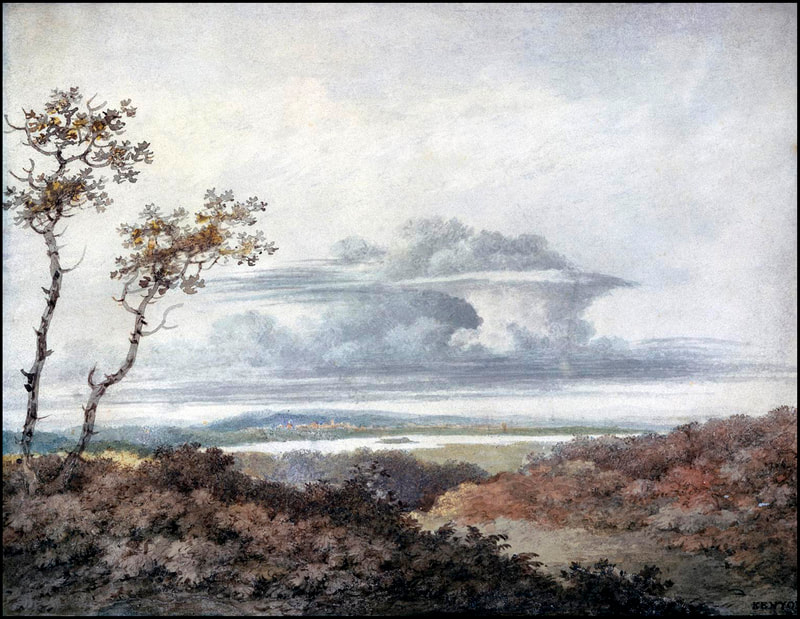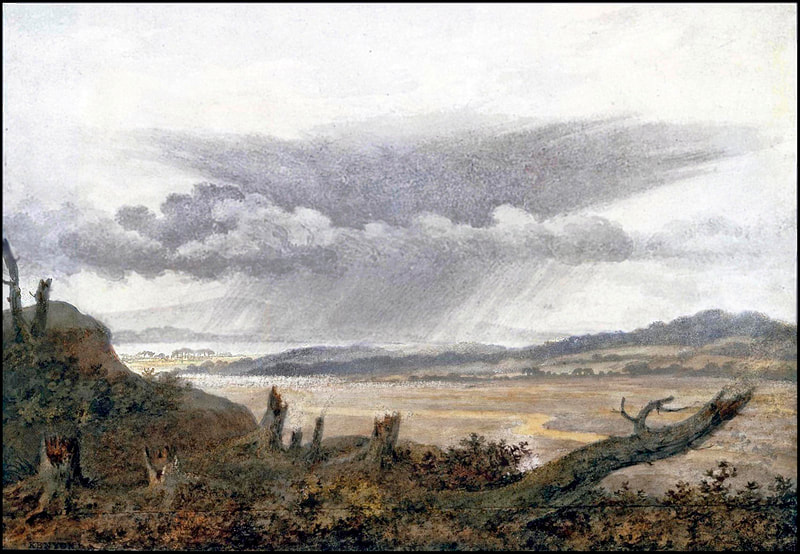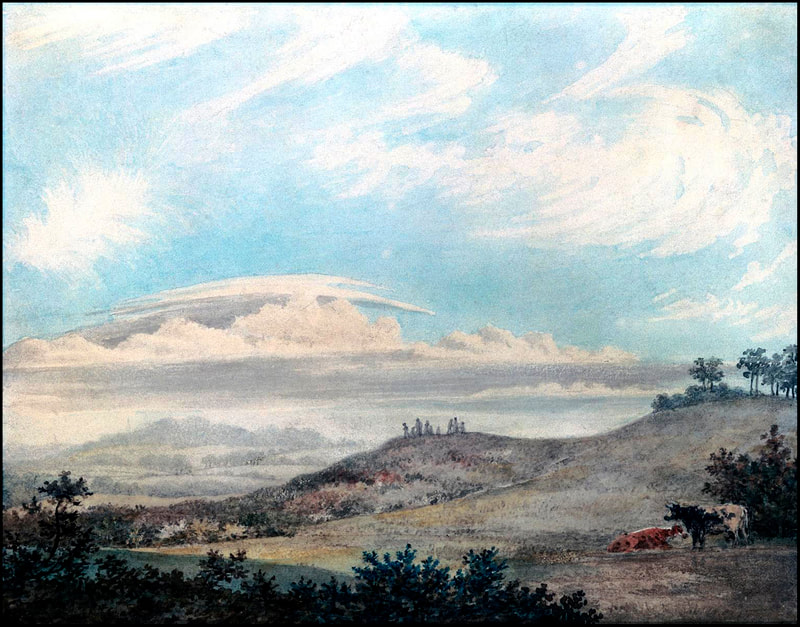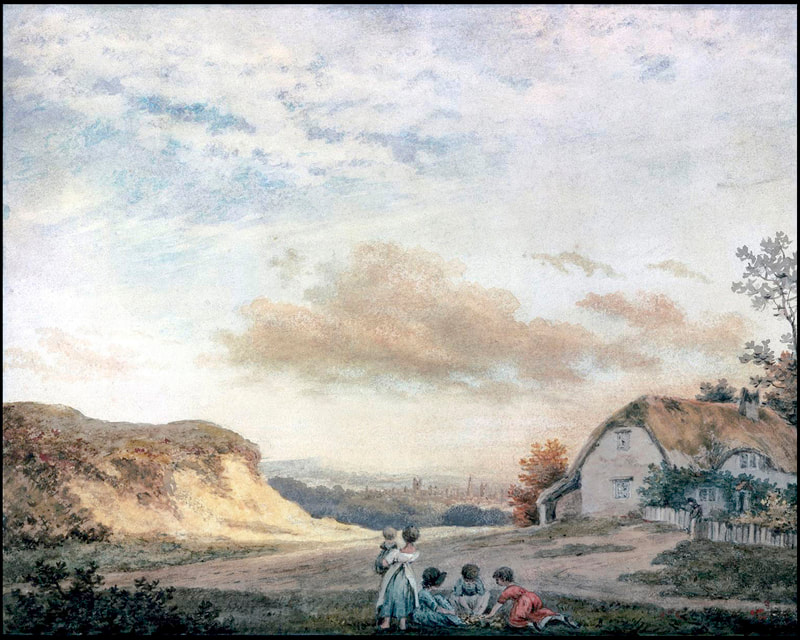Cloud painting by Luke Howard
|
Quakers were drawn primarily towards the observational sciences and away from the more theoretical and mathematical ones. Thus Quakers flocked to astronomy, meteorology and various branches of natural history, especially botany.
Luke Howard was one of the first voices calling for a new Quaker aesthetic. ‘Beauty, then, is in that which is great, in that which is true – in that which God, when he had formed it, pronounced good and blessed it!’ Science was one means of seeking truth and truth in the physical world was manifested through the aesthetic of beauty. Hence every natural phenomenon is duly proportioned and what we see as beautiful speaks of God’s design (Howard 1835). For Luke Howard the aim of meteorology was to ‘discover a chain of causes and effects, demonstrative like the rest of creation, of the infinite wisdom and goodness of its Author’. Thus in writing of clouds he noted that fair-weather clouds are beautiful, whereas cirrostratus offers ‘a frowning sky’. Again, when contemplating the rainbow he was affected by a ‘double pleasure’ in appreciating that ‘He who formed the world, was pleased, to attach the character of a perpetually recurring sign, that He would no more overwhelm it with the watery element’. Climate of London Vol 1. Aesthetics in Science, as Practised by Quakers in the Eighteenth and Nineteenth Centuries, Geoffrey Cantor 1999 University of Leeds Luke Howard himself had considerable artistic talent, teaching himself to capture the changing skies. The works below are in collaboration with the artist, Edward Kennion, providing the romantic scenery. Luke Howard noted that ‘principal modifications [of clouds] are commonly as
distinguishable from each other as the tree from a hill, or the latter from a lake’. The images below are copyright free. Copyright for Luke Howard's own sketches rests with the Royal Meteorological Society
|
Johann Wolfgang von Goethe who wrote the poem In honour of Mr. Howard
on reading On the modification of Clouds took a particular joy in meteorology:
Atmospheric phenomena can never become strange
or remote to the poet’s or the painter’s eye.
on reading On the modification of Clouds took a particular joy in meteorology:
Atmospheric phenomena can never become strange
or remote to the poet’s or the painter’s eye.






